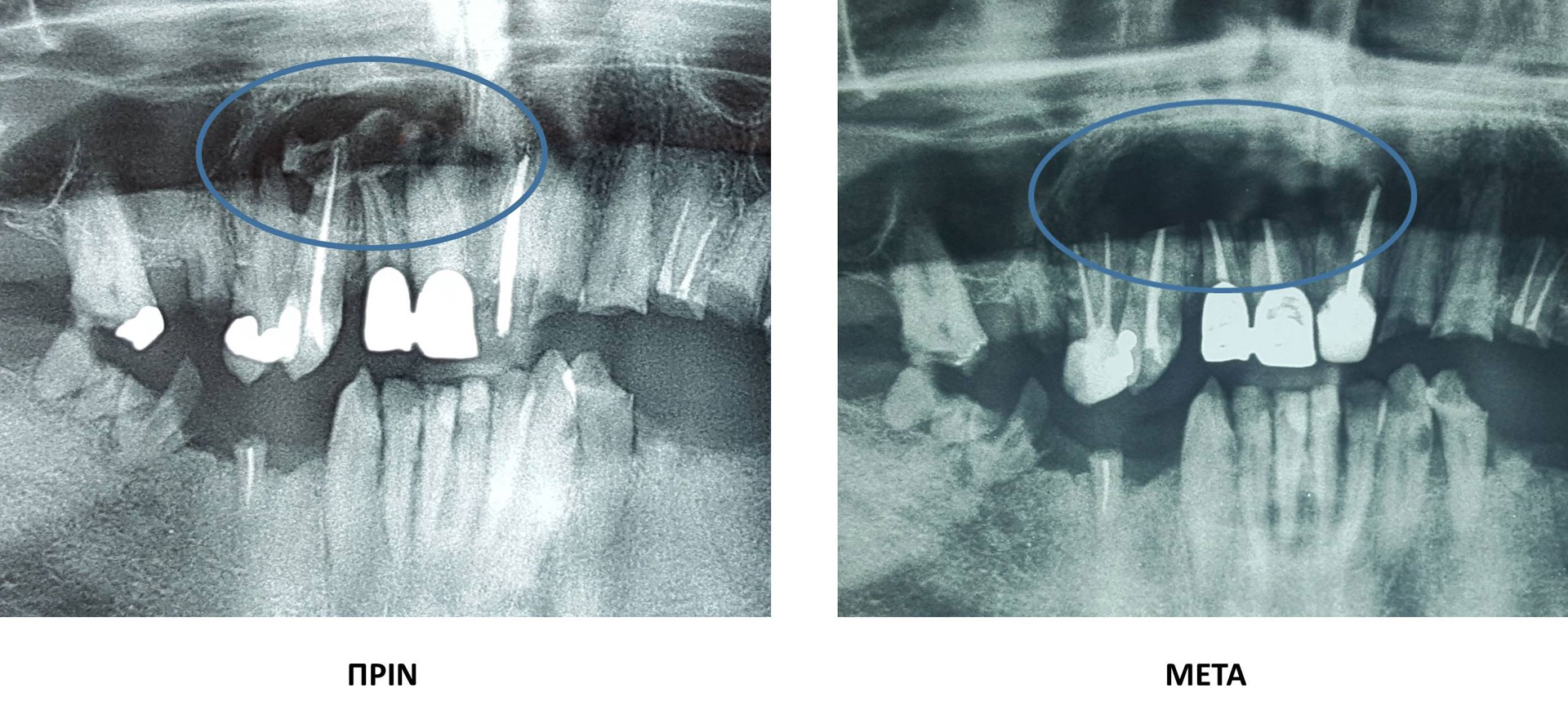The reasons to proceed with a tooth apicoectomy are:
A. An endodontic treatment has already been successfully repeated in a tooth with a previous endodontic treatment and in the presence of periapical lesions, however, after 3-4 months the tooth continues to exhibit radiographic lesions with / without concomitant symptoms.
B. An apicoectomy performed immediately after the completion of the endodontic treatment because, according to the radiographic data, the size of the lesion at the apex is considered too large to heal on its own.
C. Inability to obturate the entire length of the root canal of a tooth during endodontic treatment and if the remaining part of the root canal is relatively small. In these cases, either immediately or after some time, if a radiographic lesion is observed, an apicoectomy is performed.
D. Fracture of the tooth confirmed radiographically near the apex.
E. In case of an inability to access an endodontically treated tooth where its preservation is considered important e.g. support of a prosthetic restoration.
Surgically, after local anesthesia of the area, the gums that cover this tooth are elevated and using a mechanically rotating surgical bur, part of the end of the root is removed. This is followed by a thorough cleaning of the area around the tooth and the surrounding bone with appropriate surgical tools. In some cases the root is ’sealed’ with a special biocompatible material, according to the doctor’s choice. The wound is sutured and appropriate postoperative instructions are given to the patient, whose compliance is considered absolutely necessary for the uncomplicated course of healing. The removed inflamed tissues should be sent for histopathological examination while every 3 months it is recommended to have the area checked, until the healing of the bone peripheral to the lesion is completed.
